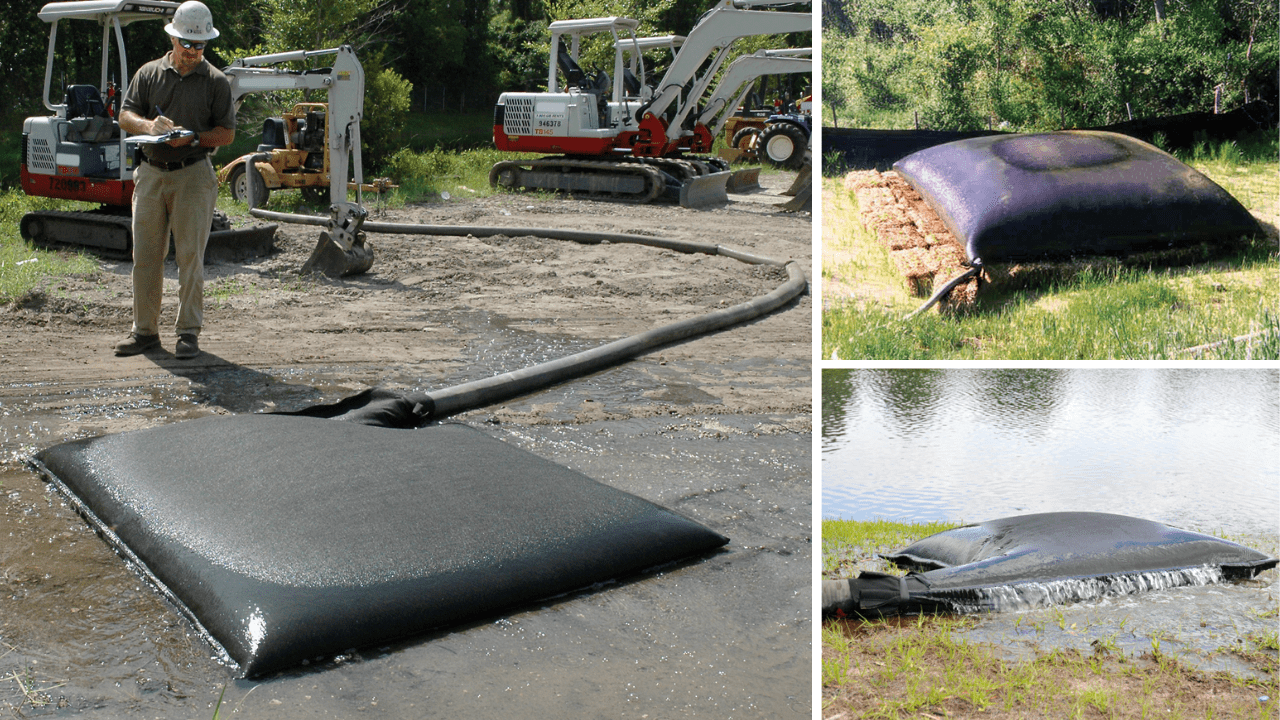What is Dewatering?
Draining water from low-lying areas is a common objective in construction projects, particularly for damp or low-lying excavation sites where foundations are to be poured. There are several different means of extracting water from these areas but the overall process is known as “dewatering.”
Dewatering Methods
Wellpoint
The wellpoint method of dewatering involves a series of small-diameter wells being spaced close to one another in the area where water is to be removed. The wells are arranged in a line alongside the excavation or a ring around the site. Each of these small wells called a “wellpoint,” is connected to the suction side of a water extraction pump via a common manifold.
Eductor
Similar to the wellpoint method of dewatering, the eductor well method is a technique where high-pressure water is used instead of vacuum to draw the water out of the wellpoints. The advantage of the eductor method over wellpoint dewatering is that it allows for greater depths of operation.
Deep Well
A deep well system consists of an array of wells where water is excavated via submersible pumps. Drawing water from the array has the effect of lowering the groundwater in the immediate vicinity, essentially forming a cone of reduction. If numerous deep wells are put into operation, the size of the area being dewatered can be significantly enhanced, making it possible to excavate without worrying about the area refilling with infiltrating groundwater. Because water is “migrating” to the wells, and not being removed by suction, substantial drops in the height of the groundwater reservoir can be accomplished. Of course, the depth of your array of wells and specific hydrogeological features in the vicinity will be limiting factors.
Pumping from each well lowers the groundwater level and creates a cone of depression or drawdown around itself. Several wells acting in combination can lower the groundwater level over a wide area beneath an excavation. Because the technique does not operate on a suction principle, large drawdowns can be achieved, limited only by the depth of the wells, and the hydrogeological conditions.
Sump Pumping
The simplest form of dewatering, sump pumping, involves allowing groundwater to seep into the excavation site, and then directing that groundwater to low points, called sumps. As water collects in these sumps, it is removed using a simple pump, which is usually triggered by a float valve. Of course, the water removed by the sump pump must be diverted or flared out to help prevent erosion at the outlet.
Protecting the Environment
Some dewatering processes also tend to remove a lot of dirt, silt, mud, and debris along with the water. These contaminants can cause problems if they are simply discharged into storm drains.
An appropriate dewatering bag—into which water from the low-lying area is pumped—is designed to filter out silt, dirt, sand, and other pollutants by trapping them so that only water escapes to the ground below or into nearby storm drains. As an added benefit, the UltraTech Ultra-Dewatering Bag also traps oil, and is available in several sizes ranging from 3’ to 15’. The bigger the bag, the longer the life (and less need to frequently check and replace it).
Dewatering bags are deployed by laying them on an area of ground that can absorb the water being removed from the low-lying area. They connect to the pump via a common discharge hose. To increase the efficiency of filtration, place the dewatering bag on an aggregate or hay bale bed.
In any case, be sure to observe local, state, and EPA regulations related to the discharge of water from your dewatering operation.






